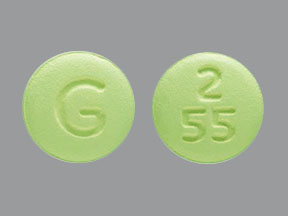Ropinirole Disease Interactions
There are 6 disease interactions with ropinirole.
- Hypotension
- Psychosis
- Neuroleptic malignant syndrome
- Cardiovascular disease
- Hepatic dysfunction
- Renal dysfunction
Dopamine agonists (applies to ropinirole) hypotension
Major Potential Hazard, High plausibility.
Dopamine agonists may impair the systemic regulation of blood pressure, with resultant orthostatic hypotension, especially during dose escalation. Therapy with dopamine agonists should be monitored carefully in patients with Parkinson's disease since they may have an impaired ability to respond to an orthostatic challenge, and also in patients receiving antihypertensive drugs.
References
- Hoehn MM (1975) "Levodopa-induced postural hypotension. Treatment with fludrocortisone." Arch Neurol, 32, p. 50-1
- Iwasaki S, Hamaguchi K, Iwasaki A, Takakusagi M, Narabayashi Y (1990) "Hypotensive effect of long-term levodopa in patients with Parkinson's disease." Eur Neurol, 30, p. 194-9
- (2001) "Product Information. Dostinex (cabergoline)." Pharmacia and Upjohn
- (2001) "Product Information. Sinemet (carbidopa-levodopa)." DuPont Pharmaceuticals
- (2001) "Product Information. Sinemet CR (carbidopa-levodopa)." DuPont Pharmaceuticals
- (2001) "Product Information. Mirapex (pramipexole)." Boehringer Ingelheim
- (2001) "Product Information. Requip (ropinirole)." SmithKline Beecham
- (2001) "Product Information. Comtan (entacapone)." Novartis Pharmaceuticals
- (2006) "Product Information. Azilect (rasagiline)." Teva Pharmaceuticals USA
- (2007) "Product Information. Neupro (rotigotine)." Schwarz Pharma
- (2017) "Product Information. Xadago (safinamide)." US WorldMeds LLC
Dopaminergic antiparkinson agents (applies to ropinirole) psychosis
Major Potential Hazard, Moderate plausibility.
Ordinarily, patients with major psychotic disorder should not be treated with dopaminergic antiparkinson agents, because of the risk of exacerbating psychosis. Hallucinations and psychotic-like behavior have been reported with dopaminergic medications. In addition, certain medications used to treat psychosis may exacerbate the symptoms of Parkinson's disease and may decrease the effectiveness of these drugs.
References
- (2001) "Product Information. Dostinex (cabergoline)." Pharmacia and Upjohn
- (2001) "Product Information. Mirapex (pramipexole)." Boehringer Ingelheim
- (2001) "Product Information. Requip (ropinirole)." SmithKline Beecham
- (2001) "Product Information. Comtan (entacapone)." Novartis Pharmaceuticals
- (2001) "Product Information. Lodosyn (carbidopa)." DuPont Pharma
- (2006) "Product Information. Azilect (rasagiline)." Teva Pharmaceuticals USA
- (2007) "Product Information. Neupro (rotigotine)." Schwarz Pharma
- (2017) "Product Information. Xadago (safinamide)." US WorldMeds LLC
Ropinirole (applies to ropinirole) neuroleptic malignant syndrome
Major Potential Hazard, Low plausibility.
Neuroleptic malignant syndrome (NMS) has not occurred during administration of ropinirole, however, the syndrome has rarely been precipitated by rapid dosage reduction, abrupt discontinuation, or changes in other dopamine agonist therapy.
References
- (2001) "Product Information. Requip (ropinirole)." SmithKline Beecham
Ropinirole (applies to ropinirole) cardiovascular disease
Moderate Potential Hazard, Moderate plausibility.
The trials of ropinirole excluded patients with significant cardiovascular disease, hence patients with cardiovascular conditions should be treated with caution.
References
- (2001) "Product Information. Requip (ropinirole)." SmithKline Beecham
Ropinirole (applies to ropinirole) hepatic dysfunction
Moderate Potential Hazard, Moderate plausibility. Applicable conditions: Liver Disease
The pharmacokinetic disposition of ropinirole has not been studied in patients with hepatic impairment, however, the serum concentration of ropinirole may be increased and the elimination half-life prolonged in these patients. Therapy with ropinirole should be administered cautiously in patients with hepatic impairment, and dosages titrated according to patient parameters and clinical tolerability.
References
- Bloomer JC, Clarke SE, Chenery RJ (1997) "In vitro identification of the P450 enzymes responsible for the metabolism of ropinirole." Drug Metab Dispos, 25, p. 840-4
- (2001) "Product Information. Requip (ropinirole)." SmithKline Beecham
Ropinirole (applies to ropinirole) renal dysfunction
Moderate Potential Hazard, Moderate plausibility.
Ropinirole is primarily eliminated by the kidney. Less than 10% of ropinirole is excreted unchanged in the urine. No dose adjustment is necessary in patients with moderate renal impairment (CrCl 30 to 50 mL/min). For patients with end-stage renal disease on hemodialysis, a reduced maximum dose is recommended.
References
- (2001) "Product Information. Requip (ropinirole)." SmithKline Beecham
Ropinirole drug interactions
There are 304 drug interactions with ropinirole.
Ropinirole alcohol/food interactions
There is 1 alcohol/food interaction with ropinirole.
More about ropinirole
- ropinirole consumer information
- Check interactions
- Compare alternatives
- Pricing & coupons
- Reviews (326)
- Drug images
- Side effects
- Dosage information
- Patient tips
- During pregnancy
- Support group
- Drug class: dopaminergic antiparkinsonism agents
- Breastfeeding
- En español
Related treatment guides
Drug Interaction Classification
| Highly clinically significant. Avoid combinations; the risk of the interaction outweighs the benefit. | |
| Moderately clinically significant. Usually avoid combinations; use it only under special circumstances. | |
| Minimally clinically significant. Minimize risk; assess risk and consider an alternative drug, take steps to circumvent the interaction risk and/or institute a monitoring plan. | |
| No interaction information available. |
Further information
Always consult your healthcare provider to ensure the information displayed on this page applies to your personal circumstances.


